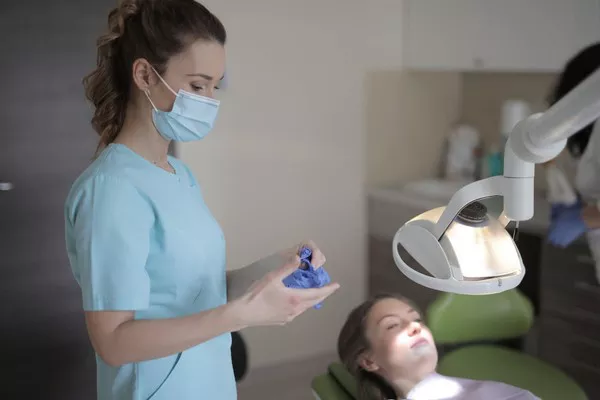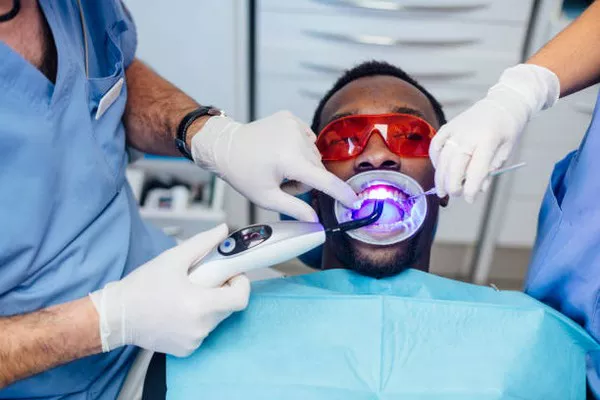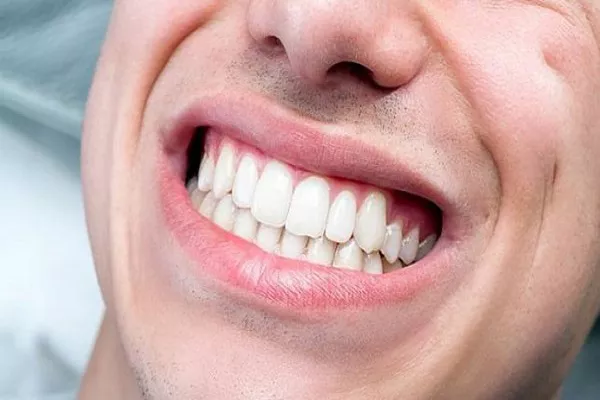Tooth discoloration is a common concern that can affect anyone, regardless of age or oral hygiene habits. Understanding the different types of tooth discoloration is essential for addressing the issue effectively. There are three primary types:
Extrinsic Discoloration
Extrinsic discoloration occurs when stains develop on the outer surface of the tooth enamel. This type of discoloration is often caused by external factors such as dietary choices, smoking, or inadequate oral hygiene practices. Extrinsic stains can usually be removed through professional cleanings or at-home whitening treatments.
Intrinsic Discoloration
Intrinsic discoloration, on the other hand, occurs within the tooth structure itself. This type of discoloration may be caused by factors such as genetics, trauma, or certain medications. Intrinsic stains are more challenging to treat and may require interventions such as professional whitening or dental restorations.
Age-Related Discoloration
Age-related discoloration refers to the natural yellowing of teeth that occurs over time as the enamel wears down and the underlying dentin becomes more visible. While aging is a normal part of life, proactive dental care can help minimize the effects of age-related discoloration and maintain a youthful smile.
Common Causes
Several factors can contribute to the yellowing of teeth both overnight and over time. Understanding these causes can help individuals take proactive steps to prevent or minimize discoloration. Here are some common culprits:
Diet
Consumption of staining foods and beverages like coffee, tea, red wine, and dark-colored fruits can contribute to tooth discoloration over time. These substances contain pigments that can adhere to the enamel, leading to surface stains that may become more pronounced overnight.
Oral Hygiene
Inadequate brushing and flossing can allow plaque and tartar to accumulate on the teeth, leading to discoloration and other oral health issues. Plaque is a sticky film of bacteria that can produce acids and toxins that erode enamel and cause yellowing of teeth. Without proper oral hygiene practices, plaque can harden into tartar, making it even more challenging to remove and contributing to further discoloration.
Tobacco Use
Smoking or chewing tobacco products can have a significant impact on the color of teeth. The tar and nicotine found in tobacco can stain the enamel and contribute to yellowing over time. Additionally, tobacco use can increase the risk of gum disease and other oral health problems, exacerbating tooth discoloration.
Sudden Changes
While tooth discoloration often develops gradually, it can sometimes seem to appear suddenly. Several factors may contribute to this phenomenon:
Changes in Oral Hygiene
A lapse in regular cleaning routines, such as skipping brushing or flossing before bed, can allow plaque and stains to accumulate overnight, leading to noticeable discoloration by morning.
Dietary Changes
A recent increase in the intake of highly pigmented foods or drinks can also lead to sudden tooth discoloration. Consuming large quantities of coffee, tea, or other staining substances can quickly stain the enamel, particularly if proper oral hygiene practices are not followed.
Underlying Dental Issues
In some cases, sudden tooth discoloration may be a sign of underlying dental problems such as decay or enamel erosion. These issues can cause changes in the color and texture of the teeth and may require prompt attention from a dentist.
Prevention Tips
Preventing yellowing of teeth requires a combination of good oral hygiene habits and lifestyle choices. Here are some tips to help maintain a bright and healthy smile:
Regular Dental Checkups
Scheduling regular dental cleanings and examinations is essential for preventing and addressing tooth discoloration. Your dentist can remove surface stains, monitor your oral health, and provide personalized recommendations for maintaining a bright smile.
Proper Brushing Techniques
Brushing your teeth at least twice a day using fluoride toothpaste and proper technique is crucial for removing plaque and preventing discoloration. Be sure to brush for at least two minutes, paying close attention to all surfaces of the teeth and along the gumline.
Dietary Adjustments
Limiting consumption of foods and Drinks that stain teeth can help prevent yellowing over time. Opt for lighter-colored beverages like water or milk, and consider using a straw to minimize contact with staining substances. Additionally, rinse your mouth with water after consuming staining foods or drinks to help reduce their impact on tooth color.
See Also: Why Do Canine Teeth Go Yellow
Treatment Options
Several treatment options are available for addressing tooth discoloration and restoring a bright smile:
Professional Whitening
In-office whitening procedures performed by a dentist can effectively remove surface stains and lighten the overall color of the teeth. These treatments use high-concentration bleaching agents to achieve dramatic results in a short amount of time.
At-Home Care
At-home whitening kits are also available for individuals who prefer to whiten their teeth in the comfort of their own home. These kits typically contain custom-fitted trays and a bleaching gel that can be worn for a specified period to achieve gradual whitening results.
Lifestyle Changes
Quitting smoking and improving dietary habits can also help prevent and reduce tooth discoloration over time. By eliminating tobacco use and limiting consumption of staining foods and drinks, individuals can maintain a brighter, healthier smile for years to come.
Myths vs. Facts
Debunking common myths about tooth discoloration can help individuals make informed decisions about their oral health. Here are some common misconceptions:
Myth: Only people with poor oral hygiene get yellow teeth.
Fact: While inadequate oral hygiene can contribute to tooth discoloration, other factors such as diet, genetics, and lifestyle choices also play a significant role.
Myth: Whitening toothpaste can effectively whiten yellow teeth.
Fact: While whitening toothpaste may help remove surface stains, they are not typically strong enough to address deep-seated discoloration. Professional whitening treatments are usually more effective for achieving noticeable results.
Myth: Yellow teeth are a sign of poor health.
Fact: While yellowing teeth can be a cosmetic concern, they are not necessarily indicative of poor overall health. However, maintaining good oral hygiene and addressing tooth discoloration promptly can help prevent more serious dental problems from developing.
Conclusion
Understanding the causes of tooth discoloration and implementing preventive measures can help individuals maintain a bright and healthy smile. By practicing good oral hygiene, making dietary adjustments, and seeking professional dental care as needed, you can keep your teeth looking their best for years to come.
You Might Be Interested In






























